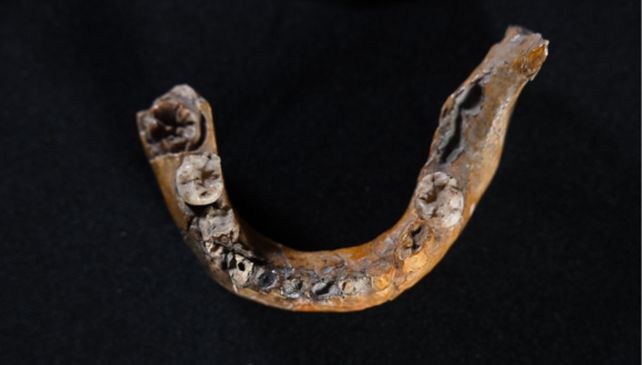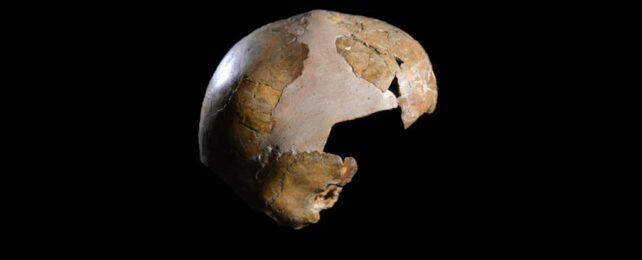The skull of a small child who lived and died many millennia ago represents the oldest direct evidence to date of the prolonged mingling between anatomically modern humans and our closely related cousins, the Neanderthals.
Clearly showing features of both groups, the skull has been dated to around 140,000 years ago; more than 100,000 years older than the only other specimen of its kind, known as the Lapedo child.
What makes this discovery so interesting is that it rewrites the timeline of Neanderthal migration into what is now Israel, enriching our understanding of the two species' shared history.
"In our study," explains anthropologist and anatomist Israel Hershkovitz of Tel Aviv University, "we show that the child's skull, which in its overall shape resembles that of Homo sapiens – especially in the curvature of the skull vault – has an intracranial blood supply system, a lower jaw, and an inner ear structure typical of Neanderthals."
Related: Neanderthal DNA Exists in Humans, But One Piece Is Mysteriously Missing

The remains were first recovered back in 1931 during excavations of an archaeological site in Skhūl Cave on Mount Carmel in what was then British Mandatory Palestine – the earliest known site with organized burials, with multiple individuals carefully interred.
Among the remains was the partial cranium of a child who died between three and five years of age, and a partial mandible that became separated during the dig, belonging to the same child. These remains were difficult to classify; currently, they are recognized as the bones of an early modern human, but some uncertainty remained.
Based on clues encoded in our own genomes, scientists have determined that the rich history of interbreeding between Neanderthals and modern humans goes back as far as 250,000 years ago, but where and how these encounters took place is a little harder to ascertain.
Part of the reason the Skhūl child was assumed to be an anatomically modern human is because, until recently, Neanderthals weren't thought to have lived in the area until around 70,000 years ago. However, a 2021 study identified fossilized remains in Israel with traits in common with Neanderthals, suggesting humanity's cousins may have been in the region as far back as 400,000 years ago.

It's in this context that a joint effort between researchers from the French National Museum of Natural History, the University of Liege in Belgium, and Tel Aviv University revisited the Skhūl child.
They performed careful, high-resolution 3D scans of the partial bones, which in turn enabled a detailed analysis of the shapes and structures of the bones. They also reconstructed the shape of the skull to ascertain how the blood vessels would have worked.
"The fossil we studied is the earliest known physical evidence of mating between Neanderthals and Homo sapiens," Hershkovitz says.
"Traditionally, anthropologists have attributed the fossils discovered in the Skhūl Cave, along with fossils from the Qafzeh Cave near Nazareth, to an early group of Homo sapiens. The current study reveals that at least some of the fossils from the Skhūl Cave are the result of continuous genetic infiltration from the local – and older – Neanderthal population into the Homo sapiens population."
The research has been published in L'Anthropologie.
